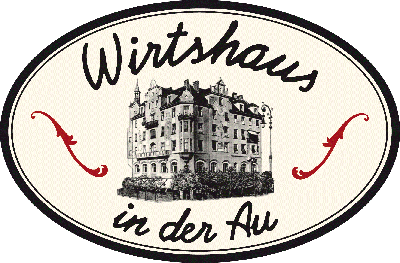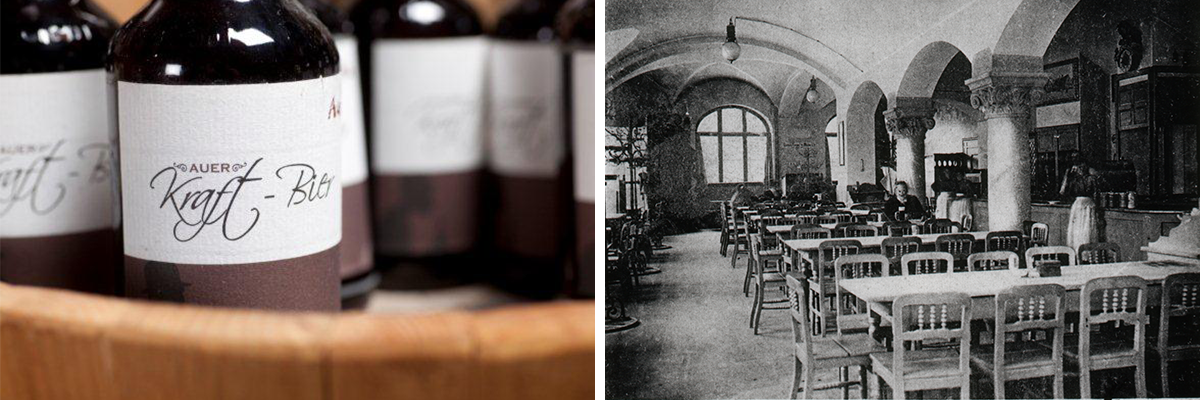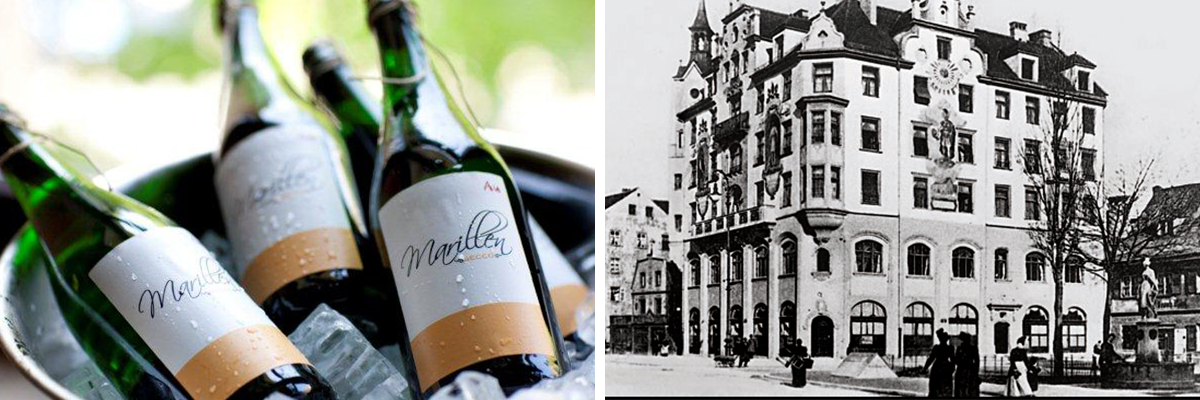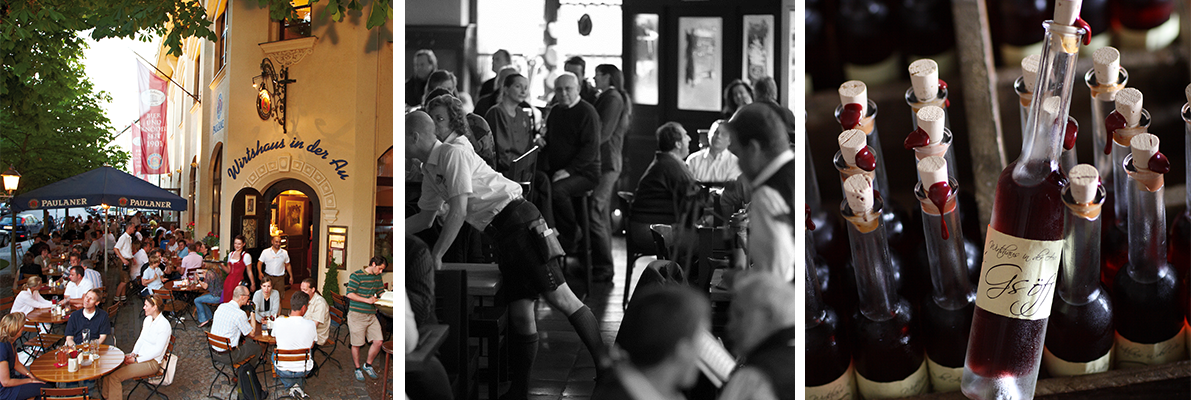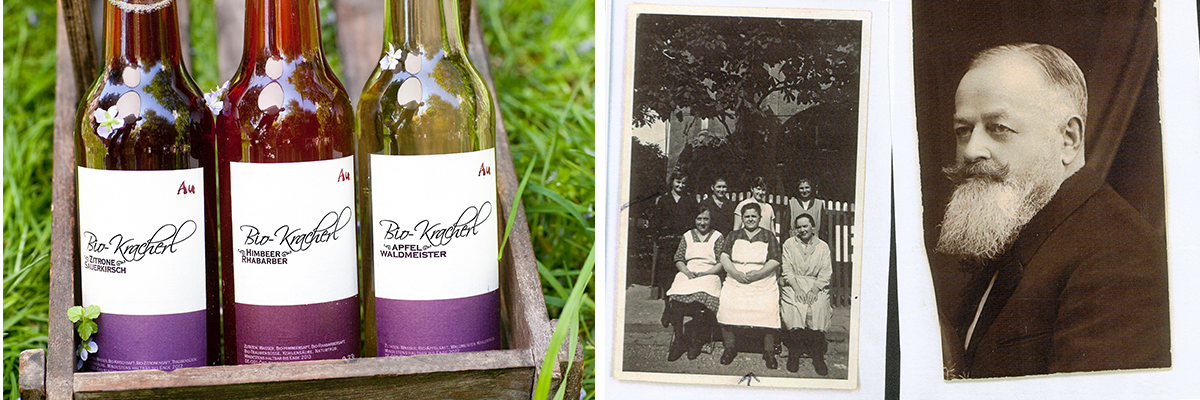Curiosities 
Lean back and let yourself in on curiosities about dumplings and beer, stories and poems by “Karl Valentin”, “Gerhard Polt” and others...
38 dumplings an hour: In 1825, a Munich landlord organized a liver dumplings- eating contest with fixed prizes to be won. At total, 2.800 dumplings were eaten that day; the winner “Eduard Stemplinger” managed to eat 38 dumplings within one hour – one dumpling within one and a half minutes each. The landlord was accused of “nonsense” but eventually acquitted of charge in court.
- taken from “der immerwährende Bayrische Kalender”
Dumplings as symbols of Bavarian culture
“Bällchen, Flutte, Knöpflin, Klössel, Kleesse, Klopse, Kniddel”... In different German dialects, alone, one can find a multitude of names for the meal which people in Bavaria generally call “Knödel”. The name “Knödel” evolved from the Old High German word “Chonodo”, which means “knot, knotting and kneading”. Dumplings can be found in food cultures of various epochs and groups of people. Just as various as those are the ways in which dumplings can be prepared. It is not very difficult to imagine that dumplings were first created at times when people did not yet use cutlery for eating but solely their hands. Even though table manners evolved, the form of the dumpling stayed the same. Ever since, dumplings count as delicacies among a broad range of social classes. The Bavarian King, Luis II, for example, favored dumplings made of pike filet and made them socially acceptable and even famous, when introducing them on festive menus at court. For many Bavarians, the dumpling still is one of their favorite meals. It symbolizes Bavarian culinary, custom and tradition as well as lifestyle.
Who exactly invented the concept of a dumpling, will forever be left in the dark of history. Fact is; whatever they might be called – whether role dumplings or bread dumplings -, dumplings are mainly made of dumpling-bread, milk, eggs, butter, pepper and salt.
Their country of origin is assumed to be Old Bavaria, from where they continue to spread out ‘rollingly’ to discover the world. So far, they have found second homes in many different cuisines worldwide.
Karl Valentin
In 1882, a boy named Valentin Ludwig Fey was born in “Zeppelinstraße”, Munich. Only 300 meters away from where our Wirtshaus is located today. Already as a young boy, the red-head Valentin was a regular in the “Wagnerbräu” alehouse on Lilienstraße. Thanks to the landlord Hans Wagner, who noticed the boy’s talent for comedy and became his first sponsor, Valentin was able to start his career as a local actor and comedian of Bavarian cabaret and vernacular and eventually became popular under the name of Karl Valentin.
Karl Valentin’s “Semmelknödel”
Karl Valentin and Liesl Karlstadt are debating about the correct spelling and pronunciation of the word “Semmelnknödeln” (bread dumplingS). As it always takes more than one bread/role to form more than one bread dumpling, Karl Valentin was convinced that this has to affect how they are called. Correctly, one must say: One “Semmelknödel”, when only one bread/role was used to form only one dumpling. “SemmelNknödelN” as in “bread-roleS- dumplingS” indicates that we are talking about more than one dumpling, supposedly made out of more than one role!
- taken from “Alles von Karl Valentin, München, Piper Verlag, 1978”
Reasonable and unreasonable stories of Karl Valentin
Information
At Munich Kalsplatz “Stachus”, a foreigner asks Karl Valentin for the way: “Excuse me, how far away is the Munich central station?” Valentin replied: “Well, continue that way and it’ll take you 40000 kilometers, turn around and it’s just about a five minutes’ walk!”
The Key
An acquaintance told Valentin that he has lost his keys. The comedian immediately crabbed his keys out of his pockets and said: “Take mine, I’m not going to make it home today, anyway.”
The Twins
When Valentin and Liesl Karlstadt saw twins in a buggy once, Liesl said: “’Mei’, Alas, how adorable they are. And how similar they look!” “I, know!” said Valentin “Especially the left one.”
Art
When Valentin once more was awarded as an artist, he said: “I have no idea why people always call it art! For one who knows how to go about it, it’s no art! Let alone for one who doesn’t know!”
The difference?
As an expert in differentiating, Valentin once described the difference between a letter and a dog as the following:
A letter is addressed! A dog is ‘a’dressed!
---‘a’ is the German word for also
---‘dressed’ as in trained
- taken from Alfons Schweiggert’s, “Ja, lachen Sie nur!” – Die schönsten Karl-Valentin-Anekdoten und Witze/ Karl Valentin’s best anecdotes and jokes
An homage to Bavarian beer
An old legend tells, that Grambinus (Jan Primus), former king of Brabant, invented the noble barley drink that we call beer today. In fact, however, we now know that already the oldest cultural nations drank a certain beverage similar to today’s beer. They produced it through brewing a barley-like fruit. The Egyptians, for example, made their own malt beer in times around 2000 BC already. Later, also the Gauls and the Spanish were known for their beer which they called “Cerevisia”.
Bavaria and beer are mostly mentioned in a breath, which makes quite sense indeed! The oldest Bavarian brewery, “Weihenstephan”, located close to Munich, exists ever since 1040. Every third brewery of the world is built on Bavarian grounds. The quality of the beer is manifested and guaranteed through the “Reinheitsgebot”, the German purity law, issued by Wilhelm IV in 1516. Herein, it says that beer may only consist of the four raw materials: Hop, malt, water and yeast. This law is valid ever since and is strictly controlled.
The beer- waitress
In 1900, Conrad Dreher, an actor and poet of Bavarian vernacular, described some people as “Munich originals” – tongue-in-cheek, obviously! “Die Bier-Kellnerin” describes a typical Munich “beer”- waitress.
Running around with 12 mugs in her hands, with bread and roles stuffed in her bags and the cigar safely stored in between her breasts...
she is swift, never abashed about her wording and talking.
- the beer waitress –
Wherever one touches her, she feels so round!
125 kilograms and yet fast as a little deer’s kid.
She shows strong morals with every sound - and well...wit!
Woe betide anyone, who dares...
to touch – to pinch, to press, to punch her
– not even tenderly –
Only a regular can be as free!
Coziness
Time is time, is the unit for coziness.
If coziness was 3.600 seconds of time,
How much time would be left of coziness, in time?
Time plus time equals more time.
Time plus snacks equals snack-time.
Time times time equals time for time?
The maybug circles the table – he’s feeling fine
And you, don’t know the day, don’t know the time.
Chestnut trees blossom in our beer garden–which one is fairer?
And you live in an earthquake-safe area.
What is the square root of time?
It is coziness,
which is, in net terms, timeless.
- taken from “Herr Ober”, Gerhard Polt (*1942), Bavarian cabaretist
Cheese comes last
As well-known, Munich lies close to the alps’ beautiful edge
Where chamois jump from rock to rock, from hedge to hedge,
Where the dairymaid sings her yodelers,
And is best friends with all her cattle - dears,
As she looks after every good old cow,
That gives, let not her food befoul,
milk to turn to butter – of its kind the best
As well as into cheese, which we suggest:
Within every meal,
must come last!
Please notice:
All poems, jokes and anecdotes were translated by a private translator. They are not
certified translations of the originals and thereby errors and omissions are excepted.
